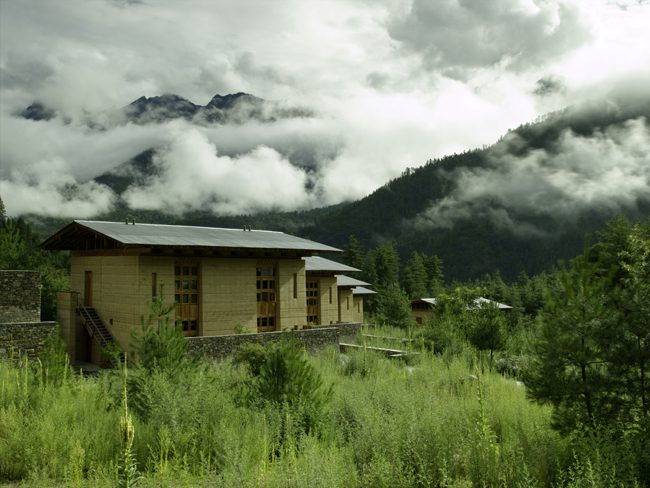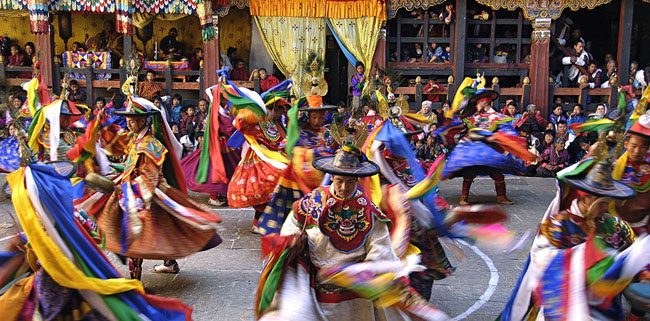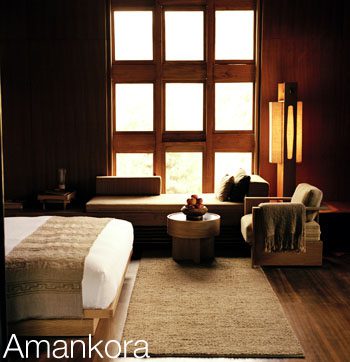Propelled to international fame with its Royal Wedding in October last year, Bhutan is a remote kingdom nestled in the midst of the Himalayas between Tibet and India.
[vc_row][vc_column width=”1/4″][vc_separator color=”black” border_width=”10″][vc_custom_heading text=”Asia”][vc_separator color=”black” border_width=”2″][vc_widget_sidebar sidebar_id=”sidebar-page”][/vc_column][vc_column width=”3/4″][vc_column_text]
Is there any place on earth where people don’t scramble in packs to lay hands on the latest version of the iPhone? Yes, there is. The name is Bhutan.

Propelled to international fame with its Royal Wedding in October last year, Bhutan is a remote kingdom nestled in the midst of the Himalayas between Tibet and India. With only one official television station, a commendable no smoking law in public places and absolutely zero traffic lights on the roads – this is a pristine enclave for all of us weary urbanites.

It is precisely because Bhutan doesn’t come with the trappings of modernity and popular culture that makes this gem the size of Iowa; attractive. In its stunning simplicity, this little world of wonder shuts out all the city noise and presents a serene platter of heritage that is as authentic as the ema datshi (chilli in cheese sauce eaten for breakfast, lunch and dinner in Bhutan).
Spiritually Divine To experience Vajrayana Buddhism is to experience Bhutan first-hand. With a population close to 700,000, seventy percent of the people are Buddhists. Vajrayana Buddhism is a spiritual practice known to be one of the most profound schools of teaching in the Buddhist world and was introduced to Bhutan in the eighth century by the sage Guru Rinpoche. A must visit is the Taktsang Monastery or Tiger Nest Monastery located in Paro, popularly known as the valley of temples and monasteries. Legend has it that Guru Rinpoche who is lauded as the Second Buddha, arrived at the Taktsang Monastery on a tiger’s back all the way from Tibet. The Bhutanese also believe it was the dakinis or celestial beings that carried materials for the construction of this monastery perched on a picturesque cliff 900 meters above the valley. The best way to get to the spectacular monastery carved in solid rock is a leisurely hike up the mountain flanked by locals paying their pilgrimage. Colourful prayer flags adorn this scenic uphill climb.
 Another interesting monastery is the Chimi Lhakhang, built after the Divine Madman, Lama Drukpa Kuenlay. In fact, this saint who lived circa the 16th century is the reason why most houses in Bhutan are painted with phalluses on the outside. Folktale has it that the Divine Madman once tamed a female demon with his thunderbolt of wisdom. As strange as the story goes, this eccentric figure is well loved by barren women, who make pilgrimages to the Chimi Lhakhang praying for the seeds of fertility.
Another interesting monastery is the Chimi Lhakhang, built after the Divine Madman, Lama Drukpa Kuenlay. In fact, this saint who lived circa the 16th century is the reason why most houses in Bhutan are painted with phalluses on the outside. Folktale has it that the Divine Madman once tamed a female demon with his thunderbolt of wisdom. As strange as the story goes, this eccentric figure is well loved by barren women, who make pilgrimages to the Chimi Lhakhang praying for the seeds of fertility.
For an upclose look at stunning Bhutanese architecture, it is recommended to visit the Punakha Dzong. Dating back to the 17th century, this monastery at Phobjikha Valley is home to the rare black necked crane believed to be the embodiment of the sixth Dalai Lama. The Kira or Gho, the national dress, is required for locals to enter monasteries. Visitors should wear collared shirts with sleeves, full length pants or skirts and shoes with socks.
Exquisite Adventure Bhutan is hailed as The Last Shangri-La because of its breathtaking landscape, ranging from tropical plains to the alpine highlands. The legacy of its natural beauty puts Bhutan at the top ten in the world for trekking. For the seasoned trekker, a must is the legendary 25 Day Snowman’s Trek. This is a challenging and wild journey across Bhutan’s mountain wilderness of Lunana. The high valleys of Lunana are situated below the world’s highest unclimbed mountain, Gangkar Puensum. Some of the highlights include following yak herders trails across high passes and travels among some of the last virgin peaks of the Himalayas. Lunana Snowman Trek is said to be the hardest trek in the world, with 12 passes between 4,500 and 5,300 meters; overnight stays between 3,700 and 5,100 meters and 24 days amidst high alpine areas.
For those looking for a gentler outing, the Jomolhari Trek and Rodungla Trek are just as stirring. These routes are in the high mountains which still call for adequate endurance and the trek time often lasts for six to 10 days depending on the chosen route. Beginners should try the Druk Path, Dagala Trek and Gasa or Laya Treks. These are shorter treks with remarkable altitude differences and each trip lasts three to six days. Alternatively, the Bumthang Culture, Gangtey and Samtegang Treks take up to four days with ample routes from village to village.
The best trekking times are mid-March to mid-May and mid-September to the beginning of November. Aside from the experienced guides who are veterans with trekking adventures in Bhutan, all necessary essentials such as camping gear and food are taken care of by the local staff and cooks come in tow as well. With all basic needs met, one has time to soak up the natural beauty of Bhutan for this jewel is blessed with a spectacular range of flora and animals. The Himalayan black bear, snow leopard, red panda and even the mysterious “yeti” add to the bucolic terrain. To lend poetry to nature, rhododendrons, blue poppy and weeping cypress dot the untainted birthright of this glorious masterpiece.




Happy People The people of Bhutan, affectionately known as the Drukpas, were once rated by Business Week magazine as the happiest in Asia and the eighth happiest in the world. This is because the country places importance on Gross National Happiness. The progress of Bhutan is measured in terms of happiness primarily and does not let material needs pollute this philosophy. There is much for us to learn from these people whose carefree lifestyle is its custom and carries on to be such even in the 21st century. They are mostly farmers who are generally tall and athletic, with elongated eyes and broad cheekbones. And their perfect bronzed tan makes me envy their beauty even more. When you take a picture of them along the streets, they smile cheerfully exuding warmth that is non-existent in the city or sometimes, the elderly continue with their chores nonchalantly in their own world emanating an air that is unaffected and pure. They are in essence – mild mannered, humble and respectful. These are simple values essential to a harmonious society.
To get to know the people of Bhutan better, the most colourful time to visit them is during their celebrated festivals or as the Drukpas calls it, Tsechu. The most famous include the Punakha Dromche, Trongsa Tsechu, Trashigang Tsechu, Paro Festival and Thimphu Festival. These festivals are religious events where everything is purified and sanctified by lamas. The dancers are in a state of meditation and in the midst, transform themselves into deities to bless the onlookers. Proper behaviour is expected and respect given to the worshippers is highly regarded.
Some of the other places that capture the essence of the people of Bhutan, their culture and tradition are the Heritage Museum, National Memorial Chorten and the Centenary Farmers’ Market. The preservation of their heritage, fairytale kingdom and untainted lifestyle is akin to an Impressionist painting that is hanging peacefully in an art gallery, prized for only the most refined to behold. It is also through the Drukpas that one can understand that the happiest are content with the simplest things in life.
Absolutely nothing within Bhutan’s distinctive splendour is borrowed. Its inherent charm comes from a place that is so elegant; it knows how to touch your heart. And hence the locals say to foreigners or chillips “Take nothing but pictures, leave nothing but footsteps.”
Luxurious Places To Stay In Bhutan

TAJ TASHI THIMPHU
www.tajhotels.com
Part of the renowned and award-winning Taj Hotels, Resorts and Palaces, the Taj Tashi is located at Thimphu – the capital of Bhutan. Designed in traditional Bhutanese and Dzong architecture, the 66 rooms are enveloped by stunning views of the mountain valley. Like an ancient palace shrouded in mysterious clouds, the Taj Tashi has Deluxe Rooms, Luxury Rooms, Deluxe Suites, Duplex Suites and Luxury Suites that start at USD413 per night. Restaurants famed for its delicacies include the Chig-Ja-Gye and the Thongsel. The golf-course is a five-minute walk away. The Jiva Spa is well-known for its ancient Indian, Royal and healing tradition.

AMANKORA
www.amanresorts.com
This is a worldwide resort brand known for its international awards and accolades. The word Amankora is a combination of the word “peace” in Sanskrit and kora meaning “circular pilgrimage” in Dzongkha, the Bhutanese language. The Amankora manner of experiencing Bhutan is to visit all its significant valleys that include a seven-night journey through its five beautiful lodges at Paro, Thimphu, Punakha, Gangtey and Bumthang. The spa at each lodge also offers the signature Amankora Oil Massage for a well rested stay. The suites feature natural rammed-earth walls and wood-panelled interiors with a traditional bukhari (wood burning stove). Rates start at USD1,300 per night. The Amankora will be hosting a special nine-night yoga retreat with London-based yoga teacher, Lorraine McConnon, from 15 to 24 July 2012. Reiki Teacher and Life Coach Sabine Kauker is also available for holistic healing in October and November 2012.
![]()
Subscribe to the latest edition now by clicking here.
If you would like to comment on this story or anything else you have seen on World Travel Magazine, head over to our Facebook page or message us on Twitter.
And if you liked this story, subscribe to our bi-monthly World Travel Magazine, a handpicked selection of editorial features and stories from Global Destinations, Inspire Me, Insider, Style File, Wellness & Travel, City Travel, Suite Life, At Leisure, Short Breaks and much more.
[/vc_column_text][/vc_column][/vc_row]



